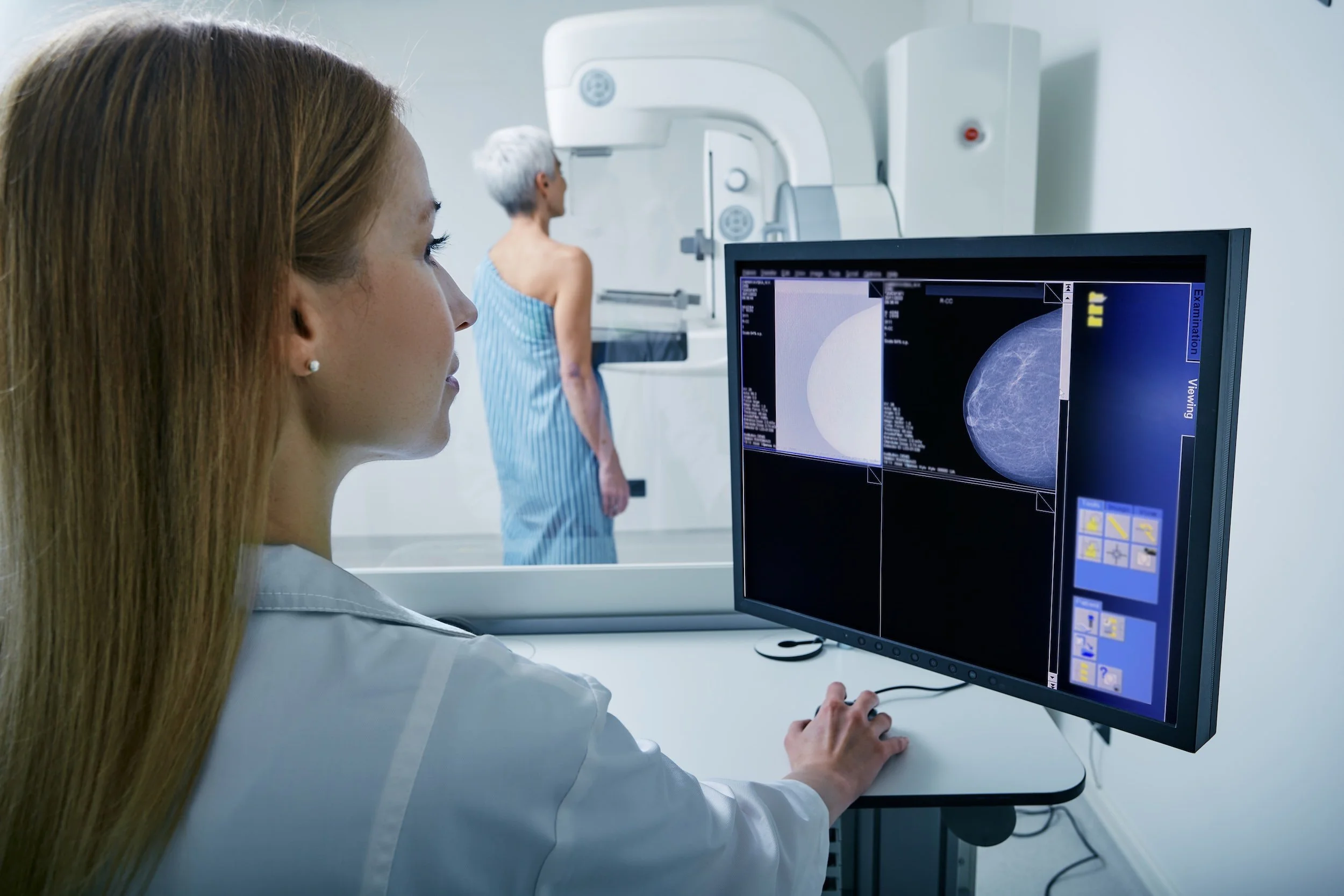How 3D Mammography Is Changing the Future of Breast Cancer Detection
3D mammography is now the standard of care for detecting breast cancer—especially for women with dense breasts. Learn how this technology improves early detection and what your options are for more personalized screening in Fairlawn, OH.
Last updated on September 30, 2025
October is Breast Cancer Awareness Month, a meaningful time to refocus on prevention and prioritize your own health. For many women in the Akron area, that means scheduling their annual mammogram. But if you’ve ever received a letter about dense breast tissue, you might have walked away feeling uncertain about what it means or what to do next.
As a concierge primary care and menopause physician, I believe clarity and early action are key. Understanding your breast density and the tools available, especially 3D mammography, the current standard of care, can make a real difference in catching issues early and reducing unnecessary stress.
Understanding Dense Breasts
Breast density describes the amount of fibrous and glandular tissue compared with fatty tissue in the breast. On a mammogram, dense tissue appears white, just like potential abnormalities, making it more challenging to see small changes.
About half of women over 40 fall into this category. Ohio law requires that women be notified if their breast tissue is dense, but those notifications often don’t explain what that means. Dense breast tissue isn’t abnormal; it simply means that a standard mammogram may not provide the clearest picture, and additional imaging might help.
This is where 3D mammography becomes especially important.
Why 3D Mammography Is the New Standard of Care
Traditional 2D mammography takes two flat images of the breast. While useful, overlapping tissue can sometimes hide small cancers or make normal tissue look suspicious.
3D mammography (tomosynthesis) is now considered the standard of care. It takes multiple low-dose images from different angles, creating a layered, three-dimensional view. This allows radiologists to examine the breast one thin slice at a time, resulting in improved accuracy and fewer false alarms.
Research shows that 3D mammography:
Detects more cancers at earlier, more treatable stages
Reduces unnecessary callbacks for additional imaging
Provides more precise results for women with dense breast tissue
When scheduling your next mammogram in Fairlawn or Akron, ask for 3D mammography to ensure you’re getting the most advanced and effective screening available.
When Ultrasound or MRI May Be Recommended
While 3D mammography provides a strong foundation, some women benefit from additional screening, depending on their risk factors and breast density.
Breast ultrasound uses sound waves to examine dense areas or areas of concern identified on a mammogram. It’s a helpful tool for differentiating cysts from solid masses.
Breast MRI offers the most detailed imaging and is typically reserved for women at higher risk, such as those with a strong family history or genetic predisposition.
At West Side Concierge Medicine, I use a personalized Breast Cancer Risk Assessment to guide these decisions. By considering your breast density, family history, hormone status, and lifestyle factors, we can create a personalized screening plan tailored to your unique needs, rather than a one-size-fits-all checklist.
Addressing Common Concerns
“I’m nervous about getting called back.”
You’re not alone. Many women feel anxious about callbacks, but most follow-ups turn out to be completely normal. 3D mammography reduces these false positives, meaning fewer repeat visits and less worry.
“Why do results take so long?”
Waiting for imaging results can be a stressful experience. As part of our concierge care model, I help coordinate 3D mammography services in the Akron area and ensure that results are reviewed promptly, often within days. You’ll hear directly from me, not an automated system, and we’ll discuss what your results mean in context.
How to Prepare for Your Mammogram
A few small steps can help make your screening more effective:
Bring prior mammogram or imaging reports, especially from other facilities.
Know your family history of breast, ovarian, or prostate cancer.
Bring any biopsy or pathology results.
Make a list of your medications and supplements.
Note any changes in your breasts you’ve recently noticed.
Coming prepared ensures a smoother process and helps your care team accurately interpret your results.
How West Side Concierge Medicine Supports Breast Health
At West Side Concierge Medicine, preventive care is a personal experience. As part of the Ms.Medicine network, our focus goes beyond standard screenings; we combine medical expertise with time, attention, and access to the most advanced tools available.
Our approach includes:
Comprehensive Breast Cancer Risk Assessments for women 40 and older
Concierge imaging coordination for 3D mammography and ultrasound
Partnerships with top radiology centers across Northeast Ohio
Rapid result review and ongoing support
A focus on education and prevention through every stage of life
When your care is proactive and personalized, prevention feels empowering, not overwhelming.
Download the Ms.Medicine Breast Health Guide
Learn more about your options with the Ms.Medicine Guide to Breast Health.
This free resource explains breast changes, screening tools, and how to build a prevention plan that evolves with you.
(Available as a free PDF through Ms.Medicine’s official website.)
Take the Next Step Toward Peace of Mind
If you’re between 40 and 74, now is the time to review your breast cancer screening plan. Whether you’ve received a dense breast letter, are due for your annual mammogram, or want clarity on your next steps, I’m here to help.
Call West Side Concierge Medicine at 330-593-CARE (2273) or visit www.wscmakron.com to schedule your Breast Cancer Risk Assessment. Together, we’ll create a plan that supports your health today and protects it for years to come.



